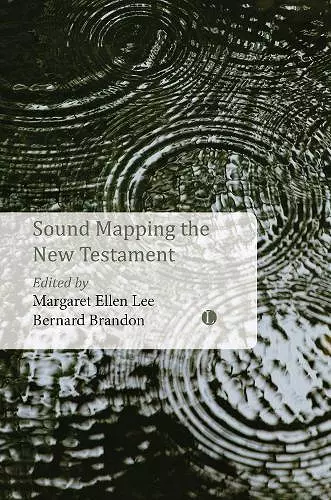Sound Mapping the New Testament
Bernard Brandon Scott author Margaret Ellen Lee author
Format:Paperback
Publisher:James Clarke & Co Ltd
Published:28th Mar '24
Should be back in stock very soon

In the ancient world, writings were read aloud, heard, and remembered. In contrast, modern exegesis assumes a silent text. For Margaret Lee and Brandon Scott, the disjuncture between ancient and modern approaches to literature obscures the beauty and meaning in writings such as the New Testament. As the structure of an ancient Greek composition derives first from its sounds, and not from the meaning of its words, sound analysis, analysis of the signifier and its audible dimension, are crucial to interpretation. Sound Mapping the New Testament explores writing technology in the Greco-Roman world, and uses ancient Greek literary criticism for descriptions of grammar as a science of sound and literary composition as a woven fabric of speech. Based on these perspectives and a close analysis of writings from the four Gospels, Paul, and Q, Lee and Scott advance a theory of sound analysis that enables modern readers to hear the New Testament afresh. This second edition includes a new introduction which reviews a decade of sound mapping scholarship.
With precise detail and careful articulation, Lee and Scott indicate how sound - the basis of language - works integrally with language to produce meaning. Their groundbreaking study discloses how sound patterns provide interpretive force that makes meaning memorable. The importance of their insights should not be ignored, as knowledge of the science of sound and language are vital to a well-educated and savvy populace. Nina E. Livesey, University of Oklahoma Based on a comprehensive survey of the grammarians and rhetoricians of ancient Greek literary theory, Lee and Scott establish sound as the medium and the colon as the basic form of New Testament literature. The reconception of its compositions as sound constitutes a manifesto for a new paradigm of New Testament scholarship. This new edition integrates current research and provides an authoritative foundation for the future that every second testament scholar will want to own. Tom Boomershine, United Theological Seminary Noting the burgeoning scholarship on sound analysis as well as the surrounding relevant critical advances, Lee and Scott double down on their compelling argument that historical criticism has been seriously flawed by its inability to detect the full resonance and texture of New Testament texts. Just as the arrival of sound utterly transformed the silent world of film, so Sound Mapping radically deepens the way biblical interpreters detect the texture of the material. Arthur J. Dewey, Xavier University Updated, expanded, and provided with a superbly informative preface, this second edition effectively reinforces the authors' central concept of sound as a medium of intelligibility. Rather than viewing the New Testament as a bookish environment divided into chapters, verses, and literary units, we are invited to rediscover its breath units, sound patterns, and audible features. Since its inception some thirteen years ago, the book has steadily grown in importance. Werner H. Kelber, Rice University, emeritus While retaining the intense focus on the transmitted text that characterises biblical scholarship, the sound mapping approach includes a vast array of methods and topics: from orality and the functions of writing, over the interpretation of ancient literary criticism, to various recent developments in linguistics. This second edition of Lee and Scott's 2009 primer is a welcome reminder of the methodological openness and the great potential of this emerging research tradition. Frank Scheppers, author of The Colon Hypothesis
ISBN: 9780718897574
Dimensions: unknown
Weight: unknown
431 pages